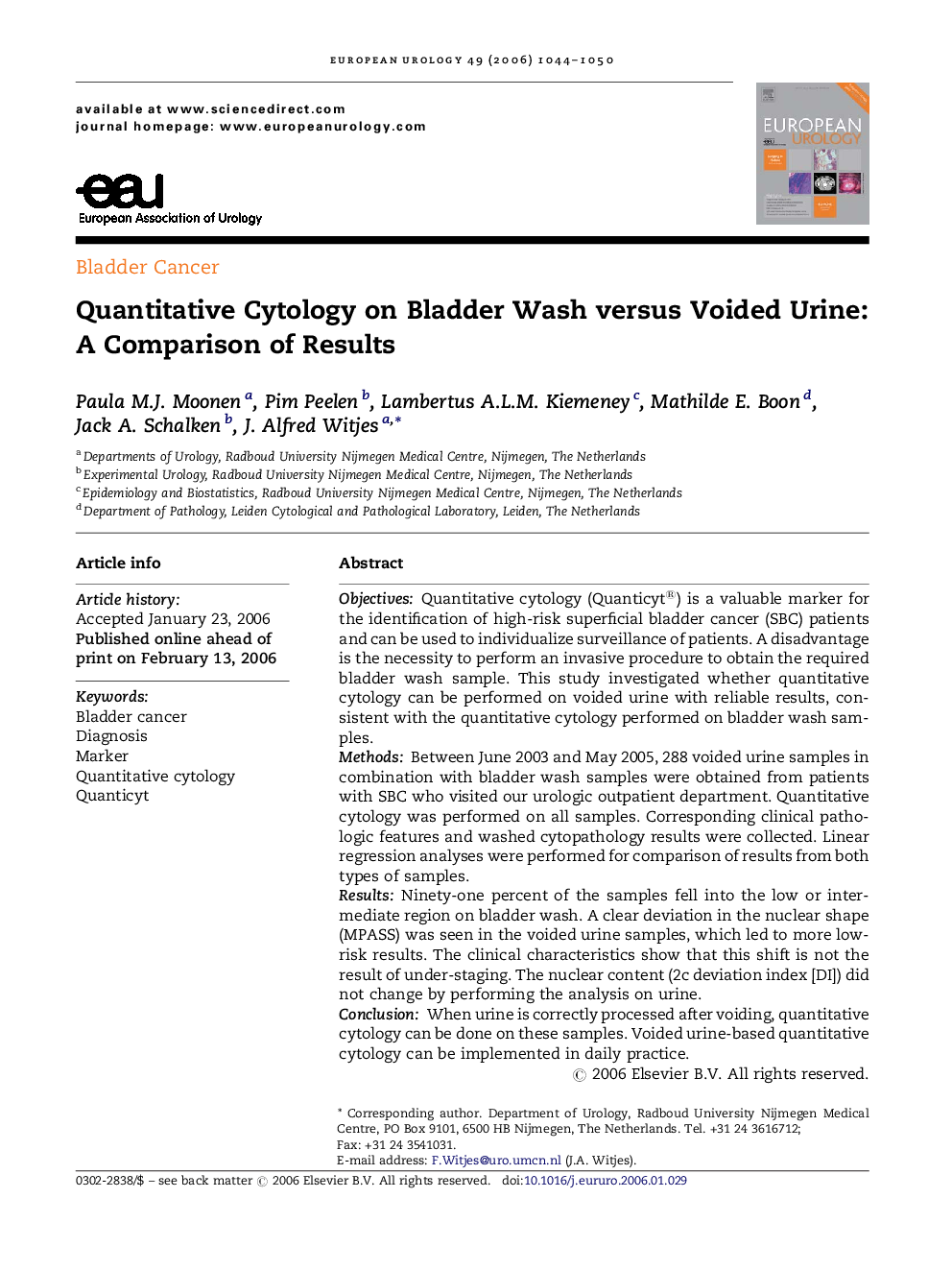| Article ID | Journal | Published Year | Pages | File Type |
|---|---|---|---|---|
| 3926926 | European Urology | 2006 | 7 Pages |
ObjectivesQuantitative cytology (Quanticyt®) is a valuable marker for the identification of high-risk superficial bladder cancer (SBC) patients and can be used to individualize surveillance of patients. A disadvantage is the necessity to perform an invasive procedure to obtain the required bladder wash sample. This study investigated whether quantitative cytology can be performed on voided urine with reliable results, consistent with the quantitative cytology performed on bladder wash samples.MethodsBetween June 2003 and May 2005, 288 voided urine samples in combination with bladder wash samples were obtained from patients with SBC who visited our urologic outpatient department. Quantitative cytology was performed on all samples. Corresponding clinical pathologic features and washed cytopathology results were collected. Linear regression analyses were performed for comparison of results from both types of samples.ResultsNinety-one percent of the samples fell into the low or intermediate region on bladder wash. A clear deviation in the nuclear shape (MPASS) was seen in the voided urine samples, which led to more low-risk results. The clinical characteristics show that this shift is not the result of under-staging. The nuclear content (2c deviation index [DI]) did not change by performing the analysis on urine.ConclusionWhen urine is correctly processed after voiding, quantitative cytology can be done on these samples. Voided urine-based quantitative cytology can be implemented in daily practice.
